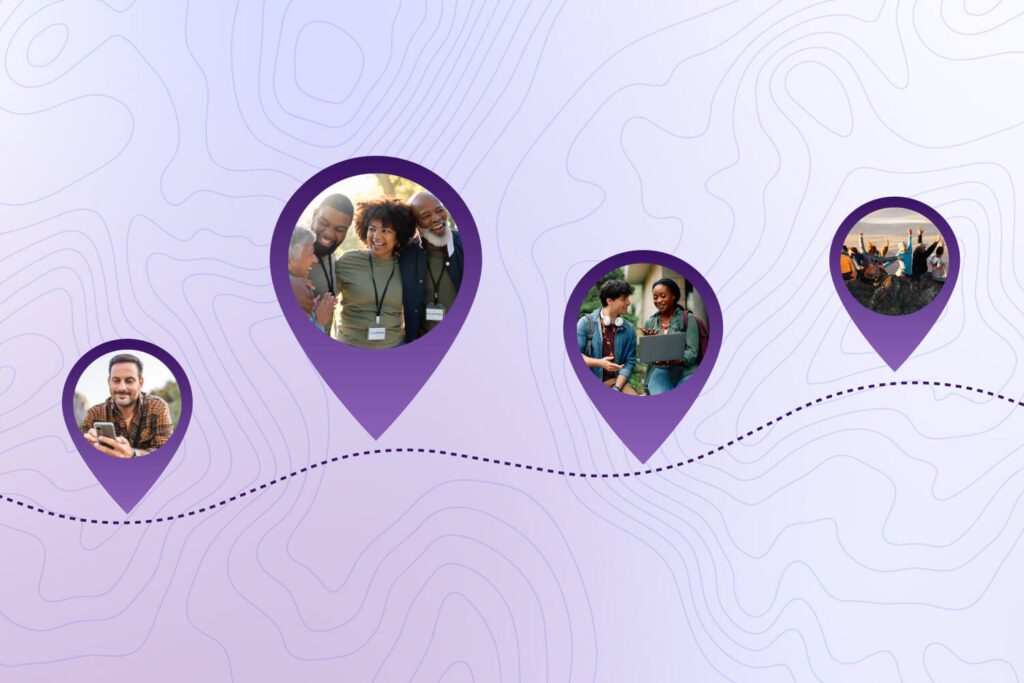Hosting events is a tried-and-true fundraising strategy for nonprofit organizations like yours. From galas to auctions to walk-a-thons, event fundraisers bring your community together and spread awareness of your cause while bringing in much-needed revenue.
To maximize your event fundraising success, your nonprofit will need to plan diligently. While your strategy will depend on whether you’re hosting an in-person, virtual, or hybrid event, these seven event planning best practices will help you get started:
1. Review data from past fundraising events
Before you start planning a fundraising event, look back at the data you collected from past events. Understanding what went well and what could be improved upon will help you make each of your nonprofit’s events more successful than the last. Registration numbers, revenue totals, and participant feedback are some of the most useful data points to review when analyzing past events’ fundraising success. Use a robust event fundraising software to view, configure, and download this data as you prepare for your next event.2. Set a fundraising goal
Every successful event starts with a clear fundraising goal. To make your event planning strategy more effective, follow the SMART model and set a goal that is:- Specific
- Measurable
- Attainable
- Relevant
- Time-bound
3. Solidify the event logistics in advance
Once you understand what you want your event to accomplish, you can turn your attention to actually planning it. The first details you’ll need to nail down are the:- Event format (in-person, hybrid, or virtual)
- Date and time
- Location (physical venue and/or online event platform)
- Main responsibilities that your staff and volunteers will need to cover
4. Secure event sponsorships
While event fundraisers often result in a high ROI, they usually require more upfront spending than other fundraising methods. To reduce your organization’s expenses, consider securing corporate sponsorships for your events. Many large corporations are willing to sponsor nonprofit events through their corporate philanthropy programs, and some local businesses also provide nonprofit sponsorships to help improve the communities they serve. Corporate sponsors can support your nonprofit’s events in a variety of ways, including:- Contributing financially
- Promoting the event to their customers
- Making various in-kind donations, from high-value silent auction items to water bottles for walk-a-thon participants
- Providing free or discounted spaces to host in-person events
- Offering volunteer grants when their employees volunteer during your events
5. Prioritize the attendee experience
Throughout the planning process, consider what the attendee experience will be like. First, determine which supporter segments your event will appeal to. For example, a gala will likely attract older, wealthy donors, while a fun run might be more suited to younger families. You could then create a pre-event survey and send it to supporters in the target demographic to gain insight into what they hope to see at your event. Based on this data, brainstorm strategies to engage attendees. For instance, many supporters enjoy friendly competition, which often occurs naturally during auctions as bidding wars ensue over high-value items. To add a competitive element to other fundraising events, you could hand out certificates to the top finishers in your 5K or display a leaderboard of bike-a-thon attendees who raise the most money through peer-to-peer fundraising. For virtual or hybrid events, consider engaging supporters through livestreaming. After building excitement through your introductory livestream, provide real-time updates throughout the event and wrap up by livestreaming a thank-you message to participants.6. Develop a multi-channel marketing strategy
To maximize your event fundraising potential, market the fundraiser early and often. Creating promotional content for multiple nonprofit marketing channels increases the chance that supporters will learn about your event in one way or another. Some platforms to leverage include:- Your nonprofit’s website. Design a general page dedicated to upcoming events as well as more specific pages for each individual fundraiser.
- Social media. Create a hashtag specifically for your event so supporters can find all of the information you post in one place. Then, encourage them to share their own photos from the event using the same hashtag.
- Email marketing. Although you’ll likely be sending a mass email announcing your event to your entire active supporter list, make sure to personalize each message by adding the recipient’s name to the greeting and subject line.
- Fundraising flyers. Whether print or digital, a well-designed event flyer can catch the attention of both existing supporters and individuals who haven’t engaged with your organization before but are interested in the type of event you’re hosting.
- Direct mail. Especially if your event appeals to older demographics or major donors, direct mail is perfect for reaching these audiences and supplementing your digital marketing efforts.
7. Stay organized on event day
The day of your event is when you’ll see all of the effort you put into planning pay off. Ensure your event runs smoothly by:- Setting up the venue and/or testing your virtual event platform in advance
- Meeting with your staff and volunteers to ensure everyone knows their event day responsibilities
- Being prepared to handle potential technical difficulties and participant concerns
Final reminder: Show gratitude for participants, volunteers, and sponsors
Once you’ve followed these event planning best practices and executed a successful fundraising event, remember to send follow-up messages thanking your participants, volunteers, and sponsors for making it possible. When your supporters feel appreciated, they’ll be more likely to attend future events. Also, consider distributing post-event surveys to each group to ask for their feedback, which can help you improve your event planning strategy over time.
Ready to Get Started?




